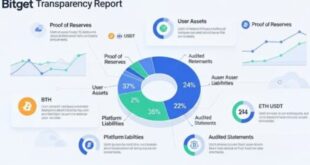The digital revolution has sparked many innovations, but few are as impactful as digital twins. More than digital replicas, they represent a new way to understand, monitor, and optimize real-world systems. In today’s fast-paced business environment, digital twins give companies a competitive edge by predicting outcomes and enabling real-time decision-making. Acting like a crystal ball, they offer insights into the future of assets and operations, transforming how industries design, operate, and maintain infrastructure.
With the market projected to grow from $10.1 billion in 2023 to $110.1 billion by 2028, according to Markets and Markets survey, their importance is undeniable.
Moving Beyond Simulation with Digital Twins
A digital twin is a virtual replica of a physical entity – be it a machine, system, or process – that integrates real-time data from sensors and IoT devices. This data-driven model simulates operations, monitors performance, predicts outcomes, and prescribes actions. While the concept has existed for decades, advancements in AI, machine learning, big data, and IoT have propelled digital twins into real-time applications, providing continuous insights and optimization.
Originally used for predictive simulations, digital twins now drive real-time decision-making and operational efficiency. In manufacturing, digital twins enable predictive maintenance, reducing planning time by 20-50% and increasing equipment uptime by 20%, according to Deloitte. In energy, the digital twin market, valued at $1.5 billion in 2022, is projected to reach $8.2 billion by 2030, predicts Precedence Research, helping grid operators predict demand and optimize energy distribution to prevent blackouts and minimize waste.
Real-time Decision Making for CEOs
For CEOs, digital twins offer a powerful tool for real-time decision-making, enabling leaders to move from reactive to proactive strategies. By integrating live data from physical assets and operations, digital twins provide CEOs with a holistic view of their organization’s performance in real time. This allows for quicker, more informed decisions, whether it’s predicting equipment failures, optimizing supply chains, or improving product development cycles. With AI-driven analytics, digital twins offer actionable insights that can minimize risk, reduce downtime, and drive operational efficiency, positioning companies to stay competitive in fast-changing markets.
Insightful Decisions in Healthcare
One of the most exciting uses of digital twins is in healthcare, where they personalize patient care and improve surgical outcomes. Advances in wearables, AI, and cloud computing allow real-time patient data – like heart rate or glucose levels – to feed into a digital twin. Doctors use this data to adjust treatments and predict complications instantly. A recent Accenture study showed digital twins could reduce patient care costs by 10% and improve outcomes by 15%. Surgeons can now rehearse complex procedures on a digital twin, reducing risks and improving precision, with future possibilities in predictive, personalized medicine.
Digital Twins and Smart Cities
The rapid growth of smart cities is another area, where digital twins are proving indispensable. Urban planners are using digital twins to model city infrastructures, such as transportation systems, water supplies, and communication networks. Real-time data collected from IoT sensors allows city officials to make quicker, more effective decisions regarding traffic congestion, pollution control, and public safety.
A notable example of this can be found in Singapore, which has created a virtual twin of the entire city known as Virtual Singapore. This platform combines real-time data on everything from road traffic to waste management systems, giving urban planners the ability to simulate scenarios and optimize city operations in real-time. According to IDC, the global investment in smart cities is expected to reach $158 billion by 2023, with digital twins playing a pivotal role in this growth.
Challenges and Opportunities
Despite its promise, the adoption of digital twins in real-time decision-making presents several challenges. Creating and maintaining a digital twin requires substantial investment in infrastructure, including sensors, IoT devices, and AI capabilities. Additionally, the security of real-time data streams is a critical concern, especially in industries like healthcare and energy, where cyberattacks could have life-threatening consequences.
However, the potential rewards far outweigh the risks. As digital twin technology matures, it will become increasingly accessible to organizations of all sizes. Smaller businesses and industries currently lagging in digital transformation may soon find that real-time digital twins offer a competitive edge in optimizing operations and improving decision-making processes.
The Future of Digital Twins
As industries continue to embrace digital twins, the future will be characterized by more sophisticated applications that integrate machine learning, AI, and cloud computing. A report by Gartner predicts that by 2025, nearly 50% of large industrial companies will use digital twins, leading to improvements in productivity, efficiency, and customer satisfaction.
Beyond mere simulation, digital twins will continue to revolutionize how decisions are made across industries, creating a more data-driven, efficient, and agile future.
In conclusion, digital twins have evolved from powerful simulation tools to game-changers in real-time decision-making. With industries such as manufacturing, healthcare, energy, and urban planning leading the charge, digital twins are poised to reshape how we interact with and optimize the physical world in real-time. The rise of this technology signals a new era of data-driven operations, and those who adopt it will be at the forefront of the next industrial revolution.
 Newspatrolling.com News cum Content Syndication Portal Online
Newspatrolling.com News cum Content Syndication Portal Online







